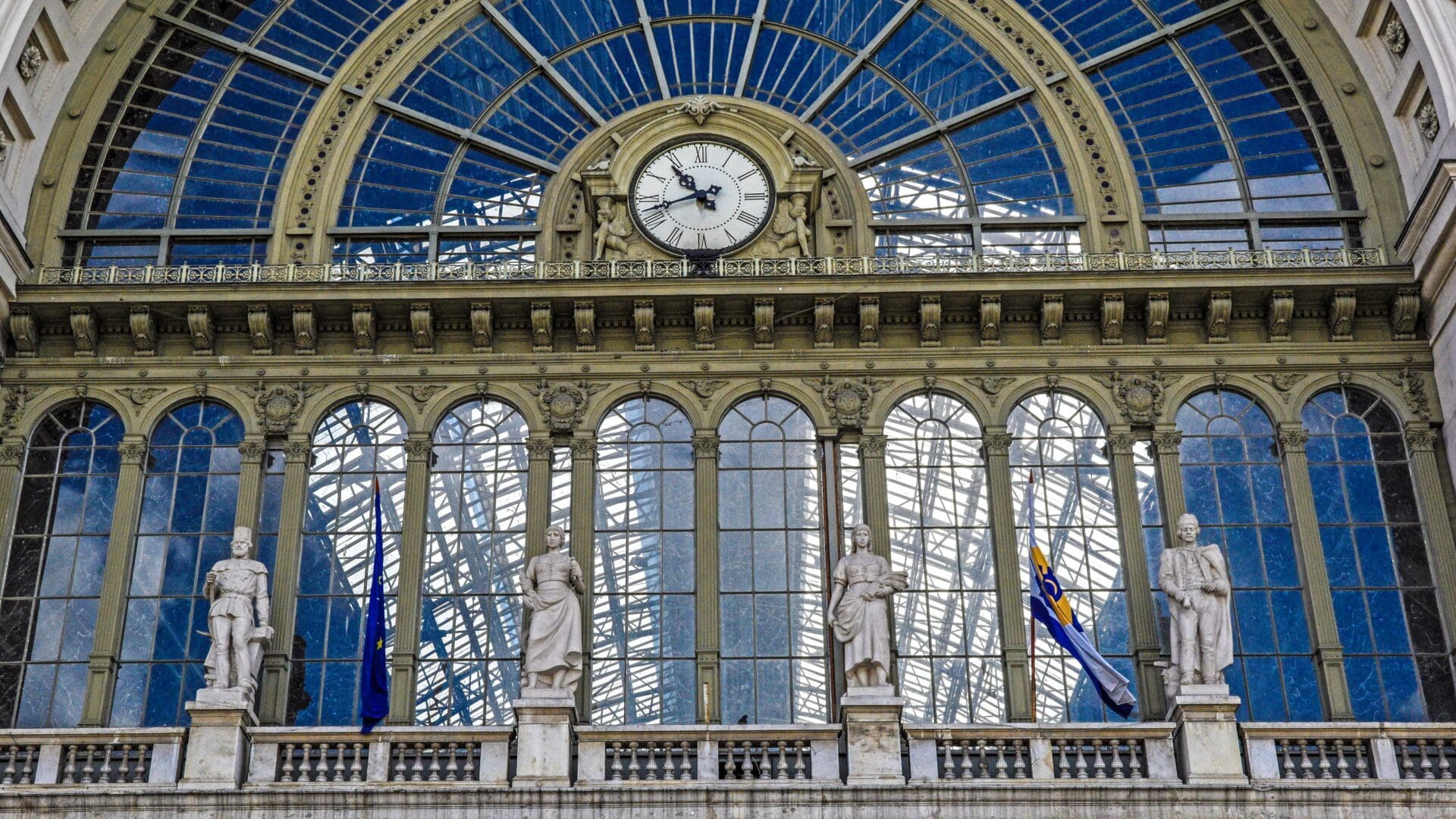139 years ago, on 16 August, 1884, the Keleti Railway Station, then known as the Central Railway Station, was opened to the traveling public. The greatest sensation was created by the state-of-the-art electric lighting, which included incandescent bulbs in the offices and arc lamps in the station hall.
During the era following the 1867 Compromise, there were five train stations in Pest-Buda. On 5 December 1868, the Hungarian Parliament decided to create a plan for connecting the stations in Pest and Buda, and to construct a central railway station in Pest to accommodate increasing passenger traffic. The location of the Central Passenger Hall was initially designated at the intersection of today’s Rákóczi Road and the Grand Boulevard. Several ideas were developed for its realisation, but due to the economic crisis of 1873, the construction had to be postponed.
In 1881, the Hungarian State Railways started building the new railway station at a changed location, near Kerepesi Road, at the present-day Baross Square. The construction of the Central Passenger Hall was overseen by Gyula Rochlitz, an architect and MÁV supervisor whose designs were also used for the construction of the Hungarian State Railways headquarters on Andrássy Avenue and the first Danube connecting bridge. The foundation works brought an unpleasant surprise: the loose, marshy soil required extensive and costly piling. Few people know that,
just like in Venice, piles were driven into the ground at Baross Square to transfer the weight of the structures onto a more stable subsoil.
The excellent planning and supervision of the piling must be credited to the expertise of the Norwegian-born Gregersen Guilbrand, as evidenced by the intact cedar wood piles found during the construction of the M2 metro line in the late 1960s and the M4 metro line in the early 2010s.
The name of the country’s busiest main railway station was not derived from its geographical location but
from its railway connections to Transylvania and the Balkans.
The young capital city gained a cosmopolitan character with the Italian Renaissance-style building placed along the axis of Kerepesi Road. The main façade, standing 40 metres tall, was adorned with allegorical sculptures representing the railway’s themes: Neptune and Vulcan, statues depicting the gods of the sea and fire, standing between a gearwheel and a steaming vessel, held aloft by a bare-breasted, winged female figure symbolising steam locomotion, as the carrier and disseminator of civilisation (the works of Ede Mayer and Béla Brestyánszky).
On each side of the 20-metre-wide gate, statues of the inventor of the steam engine and the perfecter of the steam locomotive respectively stand in niches: James Watt by Alajos Stróbl and George Stephenson by Ferenc Vasadi. Directly above the gate, symbolic figures of mining, industry, agriculture, and trade gaze down upon the observer (works of Gyula Bezerédy). The Renaissance-style gateway and other wrought-iron decorations were created by Gyula Jungfer.
The main building covers an area of 16,800 square metres, and the covered hall is 180 metres long, 42 metres wide, and 31.4 metres high. The train shed is flanked on both sides by eclectic-style wing buildings designed by Gyula Rochlitz.
The design of the bay platform hall was the work of János Feketeházy, a bridge-building engineer. The roof structure of the 42-metre-wide and 188-metre-long hall gained worldwide fame in its time due to its light-permeable glazing and natural ventilation.
Travellers from the Thököly Road side could access the platform hall through the Lotz Hall. The splendid and luxurious hall is adorned with frescoes depicting War and Peace, Mining, Metallurgy, Trade, Bridge Building, Post, Agriculture, Prosperity by Károly Lotz, and Allegory of the Railway by Mór Than.
Baron Gábor Kemény, Minister of Public Works and Transportation, scheduled the technical inspection of the railway station for 12 August, and the station’s inauguration for 16 August. On 15 August 1884, in the afternoon, curious citizens of the capital could purchase admission tickets to view the Central Passenger Hall. The greatest sensation was the state-of-the-art electric lighting, with incandescent bulbs in the offices and arc lamps in the station hall. Visitors only had one complaint: the station was far from the city centre and difficult to reach.
On the early morning of 16 August, workers finished asphalting the platform ramps by torchlight. Later that day, the first steam locomotive arrived at the new railway station, with the Hungarian coat of arms adorning the flying flag above the train.
Related articles:








